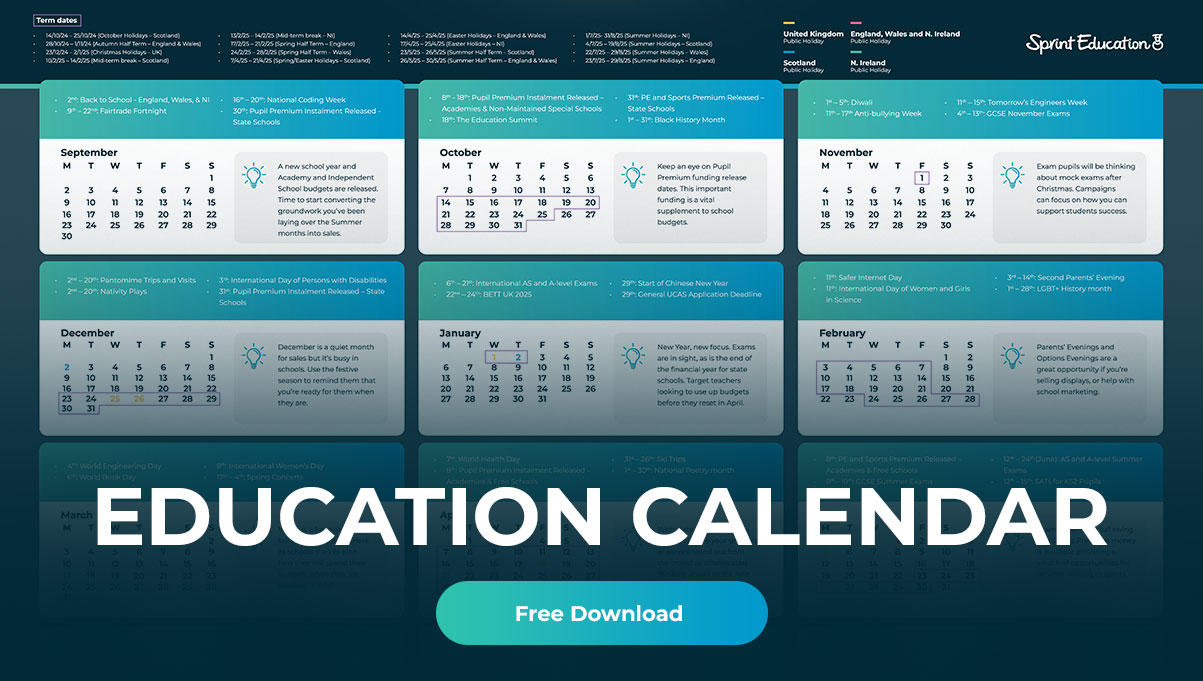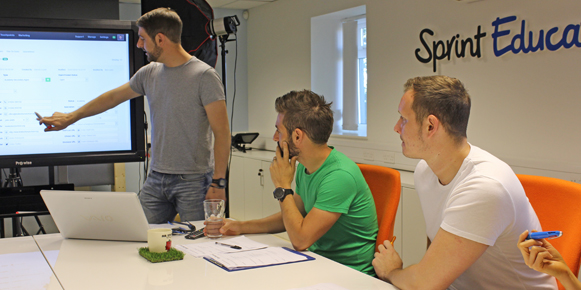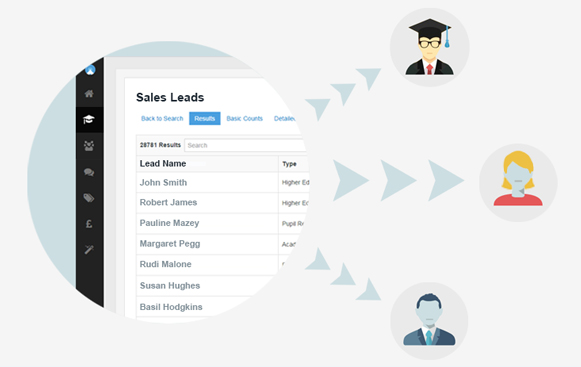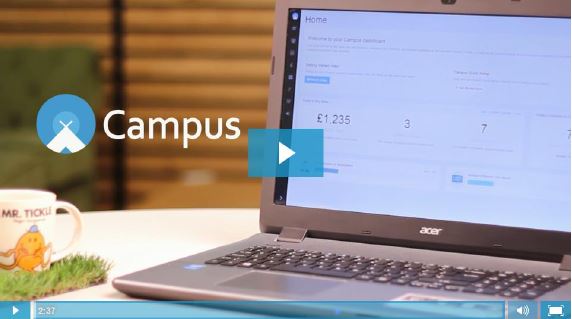Teacher On-boarding
Teacher On-boarding
Not to be confused with the 1980s Goldie Hawn movie, ‘Overboard’; on-boarding, or user on-boarding to give it its full t...
Not to be confused with the 1980s Goldie Hawn movie, ‘Overboard’; on-boarding, or user on-boarding to give it its full t...
Not to be confused with the 1980s Goldie Hawn movie, ‘Overboard’; on-boarding, or user on-boarding to give it its full title, is probably the main factor in determining if your business builds a galvanised customer-base which will jump aboard your ship for the long haul, or will leave potential customers sniffing around your business before they gradually drift off into obscurity.
If you haven’t heard of user on-boarding before, don’t worry, you're certainly in the majority. I’ve spent the past 12 years studying marketing at various levels and in all that time I've rarely come across the term in text books or seminars.
Yet I stumble across it regularly when reading blogs relating to software products, which I’ve been doing a hell of a lot of recently.
(If you didn’t already know, in the coming weeks we will be releasing Campus - sales, and marketing software for education businesses - read more. So much of my time has been spent reading up on software-geekery.)
One of my responsibilities has been to design a user on-boarding strategy for Campus. This essentially means creating a delightful experience for any seller to schools looking to test out the software before buying.
It starts with the simplicity of a free trial sign up page, before moving on to the user’s ability to quickly understand how to use the software through an automated walkthrough which gets them using the software instantly; to the visual impact and first impressions when getting a glimpse of the software’s dashboard for the first time. All these are important parts of user on-boarding, and if any of these key points are not spot-on then we will lose potential users of Campus.
But user on-boarding shouldn't all be about software, and the more time I’ve spent working on this project, the more I’ve started to realise how user on-boarding is easily translatable to products and services sold to the education sector, (it’s just that I would change the name to the more appropriately titled teacher on-boarding).
Create Your Own Teacher On-Boarding Strategy
Think about it. Every time a teacher shows an interest in what you sell they are actually experiencing your business’s on-boarding process, without you even realising it. From first impressions at the point of contact/visiting your website, to how quickly they can grasp the direct benefit of buying from you; this is happening within your business every day, and yet the chances are you haven’t intentionally planned this journey for teachers to experience.
So let’s get a proper plan prepared for you now! It’ll vary from business to business but I think the key points you need to focus on to really conquer teacher on-boarding are…
1. First Impressions
This will usually be the section of your website or marketing material which introduces teachers to your offering. Does it grab their attention and instantly conjure up a desire to find out more?
Taking Campus as an example, I had the difficulty of trying to provide education businesses with a quick description this software, which is something I know they need to sell more to schools, but possibly something that they don’t yet realise they need. So to overcome this barrier, Guy, Sophie and I recorded and edited a video which became the first call to action on our website (watch video here).
It doesn't have to be a video, but ensure you deliver a clear concise message or imagery that will instantly intrigue a teacher.
2. Capture the Fascinated
You've got their attention now, but next you need to capture that teacher’s details. This needs to be handled sensitively; as this is one area of teacher on-boarding where you can easily lose a lead.
With Campus, once they've watched the video and (hopefully) been impressed by the software, the next challenge is to encourage them to sign up for a free 30 day trial where they can test-drive the software. I've designed a very simple yet delightful way for users to signup, asking the standard questions (name, email etc.) without it feeling like a pain in the bum.
My first effort was to design a rather uninviting long-winded form. When showing this to the Sprint team Rudi and Peggy (the office Whippets) buried their heads in their beds in shame.
The form clearly failed to appear as anything other than a big obstacle in the way of a user getting to the free trial. So I went back to the drawing board and with ‘delightful usability’ burned into my mind I came back with the following…
A much more pleasing visual impact that looks like a joy to fill out!
You must consider the same with your teacher on-boarding. If you want to capture a teachers contact details then make sure you are firstly giving them a damn good incentive to fill out the form (i.e. a free lesson plan, resource, competition to enter etc.), and then ensure the user experience of the form and landing page is (and I’ll keep saying it) DELIGHTFUL!
(Did you know in Campus there is a drag and drop form creation module giving you the tools to create and style your own online lead generation forms?)
3. Make it Easy to Understand
The next ‘drop-off’ point for a teacher in your on-boarding will be how quickly they are able to understand your product/service, and how they will get the most from it. If there is any difficulty in them grasping your concept quickly then you've lost them!
When our users first log into Campus we want them to be able to understand how to use the software immediately. So we created an 8 step automated-walk-through guide that is activated when logging in. I made sure I kept this clear and concise, and ensured it educated the user about the key features and usability of Campus.
With your product/service you may not require a walk-through like ours, but you must certainly provide the teachers with the knowledge they need to truly ‘get’ your offering. This might be a PDF guide, an online demonstration, or a face-to-face meeting.
Then continue to educate with a series of emails that drip-feed through to your leads, this keeps their interest simmering away if they are still undecided on buying from you.
4. On-boarding is Never Over
So you’ve created an engaging teacher on-boarding process and it seems to be working well. But the final step is now to never stop looking to tweak, improve, and streamline your process with an even more delightful on-boarding strategy for teachers to experience.
At what points in the process are some teachers falling away? Locate these weaknesses in your strategy and tighten them up. Every lead should be treated like gold-dust so hold on to them with all your marketing-might!
Keep reaching for perfection with teacher on-boarding and your hard work will undoubtedly be repaid in potential customers/users of your products/service jumping on board with you for the long haul.
Tags
Campus
Marketing Software
Education Marketing
CRM Software
Email Marketing Software
Emailing Software
Teacher On-Boarding
User On-Boarding
Marketing
Similar Articles


Our Annual Christmas Quiz is Here! Yule Love it!
Gather 'round, it's time for the Sprint Education Christmas Quiz!


Gathering education insights (8 quick tips)
Learn 8 quick tips to improving your education marketing strategies with direct school insights, and the benefits of online studies and surveys.


Expert marketing to schools support and solutions
Expert marketing to schools solutions
Email Head Teachers, Teachers, and Staff Inboxes
Email teachers and staff inboxes
Sell More to UK and Global Schools and Colleges
Sell more to schools and colleges




























